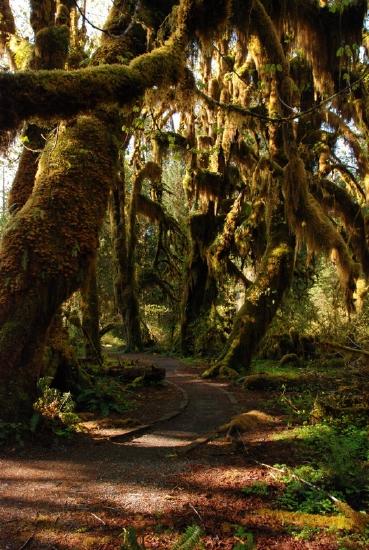5.4.10: 22.10 Temperate Rainforest
- Page ID
- 50317
Learning Objective
Recognize distinguishing characteristics of temperate rainforests & plant adaptations of the biome.
Temperate rainforests, sometimes called mixed evergreen forests, are common on the western coast of the United States, from Alaska to California. However, smaller patches of this biome can be found on other contents as well. The conditions of this biome are similar to temperate deciduous forests but winters are colder and last longer. The soil in this biome is generally poor in nutrient levels. Being close to the coast, the temperature rarely goes below freezing, averaging between 39°F and 54°F. Precipitation averages about 55 inches but can reach up to 100 inches a year.

Adaptations
The term mixed evergreen forest comes from the fact that both deciduous and evergreen (coniferous) trees are common in this biome. These evergreen trees are often tall and conspicuous. The tallest trees in the world, the coast redwoods, can be found in this biome. Often, moss and epiphytes can be found growing on the tall trees as they reach out for the sun (Figure \(\PageIndex{1}\)) . In the understory, ferns are common, as well as other shade tolerant plants. Showy wildflowers and fungi can also be seen in the understory.
Attributions
- By Kammy Algiers, is licensed CC BY-SA

